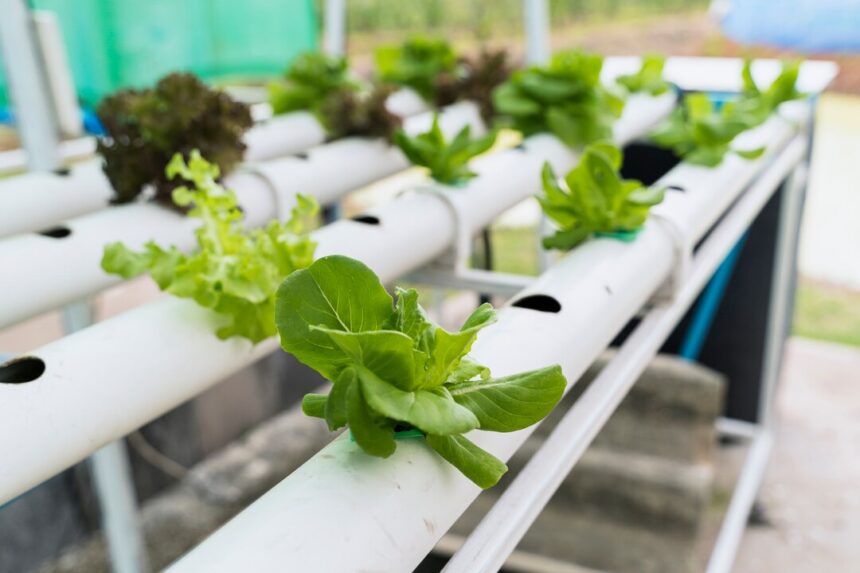In the face of global challenges such as climate change, resource depletion, and food insecurity, alternative farming methods are gaining popularity for their potential to address these issues while maximizing efficiency and sustainability. Hydroponics and aquaponics are two innovative approaches to agriculture that offer unique advantages over traditional soil-based farming. In this article, we’ll explore the principles, benefits, and applications of hydroponics and aquaponics, highlighting their role in shaping the future of food production.
Understanding Hydroponics:
Hydroponics is a soilless farming technique that involves growing plants in nutrient-rich water solutions instead of traditional soil. In hydroponic systems, plant roots are directly exposed to water containing essential nutrients, oxygen, and water-soluble minerals, allowing for optimal absorption and growth. Various hydroponic methods exist, including nutrient film technique (NFT), deep water culture (DWC), aeroponics, and vertical farming, each offering distinct advantages depending on the specific needs and scale of the operation.
Benefits of Hydroponics:
- Water Efficiency: Hydroponic systems use significantly less water than conventional farming methods by recirculating and reusing water within closed-loop systems.
- Space Utilization: Hydroponic systems can be implemented in diverse environments, including urban settings and indoor facilities, maximizing space utilization and enabling year-round production.
- Nutrient Control: With precise control over nutrient solutions, hydroponic farmers can tailor the nutrient composition to meet the specific requirements of different crops, optimizing growth and productivity.
- Faster Growth Rates: Plants grown hydroponically often exhibit faster growth rates and higher yields compared to soil-grown counterparts, attributed to improved nutrient uptake and reduced environmental stress.
- Reduced Pest and Disease Pressure: Soilless cultivation minimizes the risk of soil-borne pests and diseases, leading to healthier plants and lower reliance on chemical pesticides.
Exploring Aquaponics:
Aquaponics is a symbiotic system that combines aquaculture (fish farming) with hydroponics, creating a closed-loop ecosystem where plants and fish mutually benefit from each other’s waste products. In aquaponic systems, fish waste rich in ammonia is converted by beneficial bacteria into nitrates, which serve as nutrients for plants. As plants absorb nutrients, they help purify the water, which is then recirculated back to the fish tanks, completing the cycle.
Benefits of Aquaponics:
- Integrated Resource Utilization: Aquaponic systems utilize waste products from fish farming to fertilize plants, creating a sustainable and resource-efficient farming model.
- Increased Diversity and Productivity: Aquaponic systems support the simultaneous production of both fish and vegetables, diversifying farm output and increasing overall productivity per unit area.
- Water Conservation: Similar to hydroponics, aquaponic systems require minimal water inputs compared to traditional farming methods, as water is continuously recycled and reused within the closed-loop system.
- Natural Pest Control: The balanced ecosystem of aquaponic systems promotes natural pest control mechanisms, reducing the need for chemical pesticides and herbicides.
- Educational Opportunities: Aquaponics offers valuable educational opportunities for learning about ecology, biology, and sustainable agriculture, making it an ideal tool for educational institutions and community outreach programs.
Applications and Future Potential:
Hydroponics and aquaponics have diverse applications across various sectors, including commercial agriculture, urban farming, research and education, and food security initiatives. From rooftop gardens in urban centers to large-scale commercial operations in rural areas, these alternative farming methods offer scalable solutions for increasing food production while minimizing environmental impact. As technology advances and our understanding of these systems deepens, the potential for innovation and integration with other sustainable practices continues to grow, paving the way for a more resilient and regenerative food system.
Hydroponics and aquaponics represent innovative approaches to farming that offer numerous benefits for sustainability, efficiency, and productivity. By harnessing the principles of soilless cultivation and closed-loop ecosystems, these alternative farming methods have the potential to revolutionize food production and address pressing challenges facing the agricultural industry. As interest and investment in these technologies continue to grow, it is clear that hydroponics and aquaponics will play a significant role in shaping the future of farming and food security worldwide.
Join 'Farmers Mag' WhatsApp Channel
Get the latest Farming news and tips delivered straight to your WhatsApp
CLICK HERE TO JOIN






